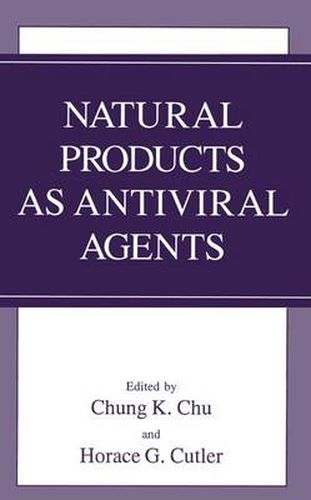Readings Newsletter
Become a Readings Member to make your shopping experience even easier.
Sign in or sign up for free!
You’re not far away from qualifying for FREE standard shipping within Australia
You’ve qualified for FREE standard shipping within Australia
The cart is loading…






This title is printed to order. This book may have been self-published. If so, we cannot guarantee the quality of the content. In the main most books will have gone through the editing process however some may not. We therefore suggest that you be aware of this before ordering this book. If in doubt check either the author or publisher’s details as we are unable to accept any returns unless they are faulty. Please contact us if you have any questions.
During the past fifty years, thousands of natural products have been isolated from plants, fungi, and bacteria. Apart from intense searches by pharmaceutical companies for medicinals and the concentrated effort mounted by the National Cancer Institute, many of these have not been tested in biological systems. The major reasons for this appear to be, at least, twofold. First, individual researchers looking for biologically active natural products will often isolate only small amounts of material sufficient to determine a structure and calculate the specific activity for their particular bioassay systems: insufficient funds preclude re-isolating the compound unless industrial potential is foreseen. Second, the difficulty with which original structures were proved prior to 1972. This required the isolation of relatively large quantities of a natural product and there followed extensive degradation, elemental analyses of the parent and its fragments, then synthesis, piece by piece, of the molecule. All this took time and energy. No wonder that when the structure was proved the chemist was enervated. And coupled to this was the fact that many chemists were not trained to test their materials in biological systems. In contrast, today a natural product can be isolated, its mass and molecular formula determined and, if there is some serendipity, crystals may be obtained for single crystal x-ray analysis. If conditions are near perfect, it is possible to isolate and identify a novel compound in a month.
$9.00 standard shipping within Australia
FREE standard shipping within Australia for orders over $100.00
Express & International shipping calculated at checkout
This title is printed to order. This book may have been self-published. If so, we cannot guarantee the quality of the content. In the main most books will have gone through the editing process however some may not. We therefore suggest that you be aware of this before ordering this book. If in doubt check either the author or publisher’s details as we are unable to accept any returns unless they are faulty. Please contact us if you have any questions.
During the past fifty years, thousands of natural products have been isolated from plants, fungi, and bacteria. Apart from intense searches by pharmaceutical companies for medicinals and the concentrated effort mounted by the National Cancer Institute, many of these have not been tested in biological systems. The major reasons for this appear to be, at least, twofold. First, individual researchers looking for biologically active natural products will often isolate only small amounts of material sufficient to determine a structure and calculate the specific activity for their particular bioassay systems: insufficient funds preclude re-isolating the compound unless industrial potential is foreseen. Second, the difficulty with which original structures were proved prior to 1972. This required the isolation of relatively large quantities of a natural product and there followed extensive degradation, elemental analyses of the parent and its fragments, then synthesis, piece by piece, of the molecule. All this took time and energy. No wonder that when the structure was proved the chemist was enervated. And coupled to this was the fact that many chemists were not trained to test their materials in biological systems. In contrast, today a natural product can be isolated, its mass and molecular formula determined and, if there is some serendipity, crystals may be obtained for single crystal x-ray analysis. If conditions are near perfect, it is possible to isolate and identify a novel compound in a month.